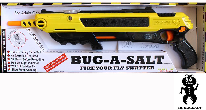Where is the Japanese beetle located? Hopefully, not in your garden or yard because the Japanese beetle is the most widespread pest of trees, turfgrass, and ornamental grass in the United States, costing millions of dollars in pest control each year. Japanese beetles were first found in the United Sates in the early part of 1900 and their population has spread to nearly all areas east of the Mississippi River, with small pockets here and there in the western part of the country. Japanese beetles infest parks, golf courses, and farms, but they also destroy flower and vegetable gardens, and wreak havoc on fruit trees and even bushes and shrubs. In other words, wherever there is foliage to consume, you will find Japanese beetles to consume it. And, given enough time, their migratory path will likely take them clear across the United States.
Having one complete life cycle that lasts an entire year, the Japanese beetle starts off as an egg, grows to the grub worm, or larva, stage, morphs into the pupa stage, and then emerges as an adult in mid-summer. During the warm days of summer, the adults fly, assembling together to forage on plants and mate. The females deposit four eggs into loose, moist soil on the afternoon that they mate, and can produce sixty eggs in her lifetime. The grub worm emerges after two weeks and they feed on plant roots, staying underground throughout the winter. In spring, and after the soil warms, the grub worm makes its way closer to the surface and continue to feed, eventually hibernating and becoming inactive for about a 10-day duration, and that's when they begin their pupa stage. After the pupa stage is complete—anywhere from 8 to 20 days—the adult Japanese beetle emerges, forages for food above ground, mates, and the life cycle begins again.
A swarm insect, the Japanese beetle travels and feeds in groups and swarms can strip a fruit tree of all foliage as well as fruit in as little as 10 minutes. Preferring flowers and fruit, Japanese beetles feed voraciously on the fruit and foliage of cherry and peach trees, grapes, hibiscus, elder, and sassafras, to name just a few. One reason why the Japanese beetle is so utterly destructive is that, while the larvae feed below ground, the adults feed above ground, providing a double-whammy to gardeners and farmers.

Have Fun Getting Those Pesky Flies! Get rid of them with the original salt gun. Use a pinch of salt, pump the handle, turn the safety switch, aim, and fire. Kills flies within 3 feet with virtually no mess. Won't harm glass, windows, or walls. Check out Bug-A-Salt today!
Whether you call them lady bugs or lady beetles, you can tell them apart from other insects by their colored, spotted ...
Discover MoreSince bedbugs congregate and feed at night, and if you have a house pet, wait until the pet is asleep and see if you can ...
Discover MoreOver time pests have become resistant to chemical forms of control. Many chemicals used for pest control also carry an ...
Discover MoreThere are currently no comments for this tip. (Be the first to leave your comment—just use the simple form above!)
Copyright © 2025 Sharon Parq Associates, Inc.
Comments